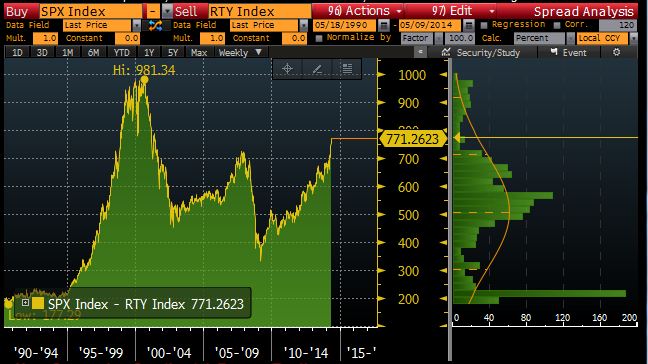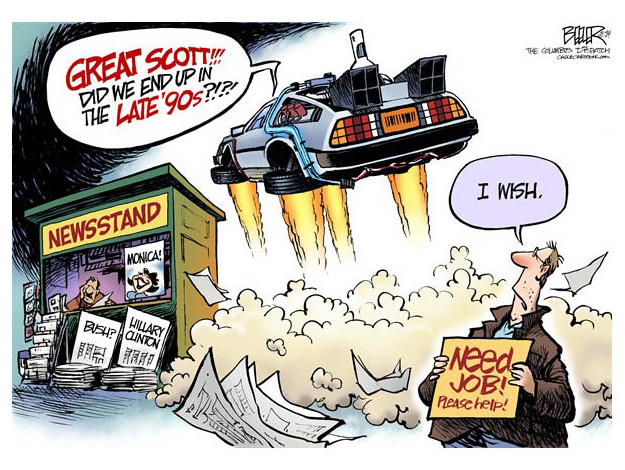The S&P 500 tried to pull back yesterday, but as usual the late day trading pushed the loss to just 65 bps. This has become the normal market. In 2012, volatility puttered at 12.77%. In 2013 it fizzled down to 11.07%. YTD we have crept up to 11.73%. These metrics tell you to expect daily gains and losses to be +/- .75%. Very Exciting.
What does this market remind me of? I would say the nearest example is 2004-2006 when volatility cycled between 10-11%. What do these two periods in time have in common? Extremely easy monetary policy provided by the Fed.
The most powerful chart to show you the impact of Fed provided liquidity plots realized volatility against the steepness of the yield curve as measured by the spread between the 10y and 2y treasury rates. As the fed keeps the front part of the curve low through the Fed Funds rate, the steepness is held high. A steep yield curve induces investors to borrow at cheap shorter rates and buy riskier assets to earn a spread. Party on while the Fed provides the punch bowl.
The red line above is the steepness inverted, so higher numbers represent the curve flattening or the Fed taking punch away from the party. Low numbers say party on. The blue is the trailing 90 day realized volatility of the S&P 500. When the Fed says to party, the volatility stays abnormally low.
Key point to make in this chart is that the red line is two years behind the blue line so the red line starts at 1/31/1977 while the blue line starts in ’79. This implies that the tightening of monetary conditions or reduction in market liquidity takes about 2 years time in order for volatility to pick up. If the curve can remain steep for another two years, then how large will the volatility dislocation become when the Fed does ease off the gas pedal? Most punch bowls are provided for 2 years or less. Right now we are in the 6th year of zero interest rate policy with a strong indication that they will maintain it well into 2015. Maybe this time the volatility will come even before the Fed eases off the pedal?












